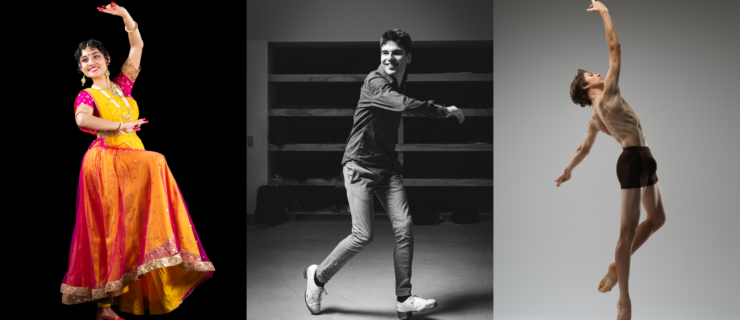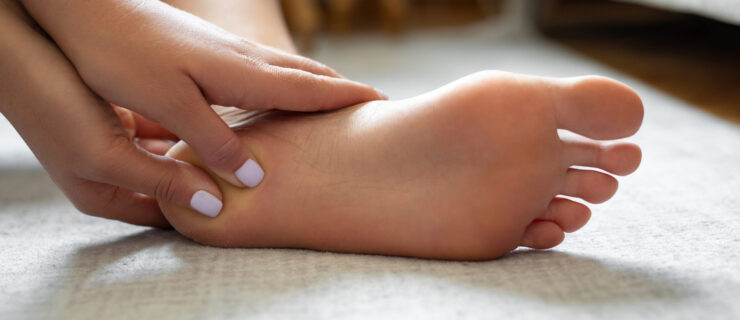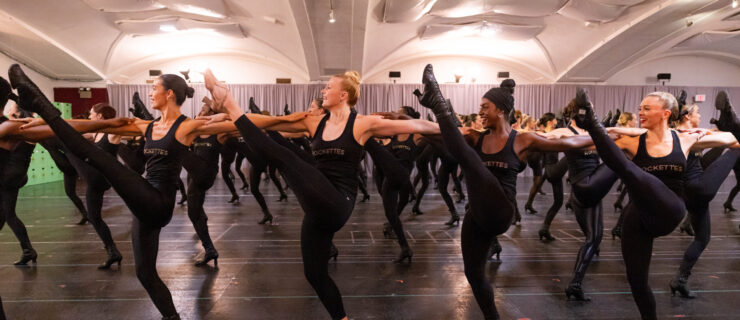Top Turning Tips from the Experts
Consistent turns are a must for aspiring professional dancers, but pretty much everyone struggles with pirouettes at some point. Luckily, since we’re all beholden to the same rules of physics, there are concrete steps every dancer can take to reach his or her top turning potential. “Three is the new two when it comes to pirouettes, but the secret to turning is technique, not magic,” says Bojan Spassoff, president and director of The Rock School for Dance Education in Philadelphia.
Falling out of your doubles? Aspiring to go revolution for revolution with your class’s star turner? No matter where you lie on the turning spectrum, our 360-degree guide to pirouettes will help you improve.
Do Yourself a Solid
The stability of the passé position is the heart of every good pirouette. “I wasn’t always great at turning,” says 12-year-old Sophia Lucia—showing off her skills in the Instagram post above—who holds the Guinness World Record for the most consecutive pirouettes (55). She’s learned to go down the RAFT checklist (rectangle, arch, focus, tightness) before each turn. Her shoulders and hips should be level, so the outline of her torso forms a rectangle. Her arch should push over the second toe of her supporting foot. She should focus her eyes on a specific spot. “And there shouldn’t be one loose muscle in my body,” Sophia says. “I’m not tense, just compact, which holds the whole position together as I turn.”
Assess your own passé position in a simple balance. Are you using your highest possible relevé? “You should feel a stretch through the top of your foot, like someone is lifting under your heel,” says Stephanie Wolf Spassoff, co-director of The Rock School. The front of the hips should be flat and level; your core muscles should support your passé; and your back and shoulder muscles should support your arms. Be sure to draw your passé up to its fullest height. “In a good position, you’ll feel taller than you’ve ever felt before,” says Darla Hoover, artistic director of the Ballet Academy East Pre-Professional Division in NYC. Once everything’s properly placed, you should be able to balance easily.
Whip It Good
Your preparation is what sets that perfect passé in motion—and the key is a deep plié that gives you the force you need to get on top of your leg, according to Denise Wall, artistic director of Denise Wall’s Dance Energy in Virginia Beach, VA. “Especially in fast-paced pieces, I see dancers bending their knees in plié without really connecting to the floor,” she says. Feel your weight in the plié and push off the floor equally with both feet as you go into your turn. “Then find the quickest, most direct way to get from preparation to passé, and don’t let the position lose integrity,” Wolf Spassoff says. “There’s a tendency for dancers to use a lot of force and go for as many turns as possible, but they literally throw themselves off balance. You have to be controlled and coordinated as you squeeze up to that position.”
A strong spot will also help whip you around—but don’t let your head go wild. “Your head is the heaviest part of your body, and it should drive down into the supporting leg,” Wall says. Otherwise, the weight of your head will pull you off balance, causing you to fall out of the turn. “Your eyes should truly see something right from the moment of takeoff,” Hoover adds. “If you have trouble spotting, practice by doing chaîné turns, which are simpler and naturally rhythmic, and put up actual targets to spot.”
And don’t forget about your arms. “You wouldn’t want to be on a plane with a flapping wing,” Hoover says. Engage your latissimus dorsi (lats), the large muscles that run down the back. If you’re having trouble finding that feeling, start by pirouetting with your hands on your hips, keeping your elbows from moving. But don’t let your upper body get stiff. “The arms don’t have to be static,” Wolf Spassoff says. “They should feel supported and buoyant—almost as if they’re floating on water.”
Troubleshoot (a Video)
The foundations of a good pirouette may be the same for all, but because everyone’s body is different, corrections for one dancer don’t necessarily apply to the rest of the class. “I’d love to be able to say, ‘Go take your pirouette vitamin,’ like the answer is the same for everyone,” Spassoff says. “But your body is unique, and you need to find out how to use it most efficiently for your turns.” (Some of Spassoff’s Rock School students are finding their own unique ways to multiples in the video above.)
Ask a friend to record a video of you doing a series of preparations and turns on both sides, and analyze what you see. Falling sideways? You might be hiking up your working hip as you draw your foot up to passé. Falling backwards? You might be raising your shoulders or throwing your arms behind you. Rewind, rewind and rewind again, looking for the keys that will unlock your perfect pirouette. When in doubt, check in with that passé position, and don’t get discouraged. “A turn is a living thing you’re molding,” Wolf Spassoff says.
Everyone has moments of frustration. “The day before a performance, I ran my solo 10 times and wasn’t getting my turns,” Sophia remembers. “I had a meltdown. But my mom helped me be confident by reminding me how hard I’d trained.” On days when your pirouettes aren’t working, remember that you’ve already got the tools you need to fix them in your turning toolbox: science, strength and awareness.
A version of this story appeared in the October 2015 issue of
Dance Spirit.



